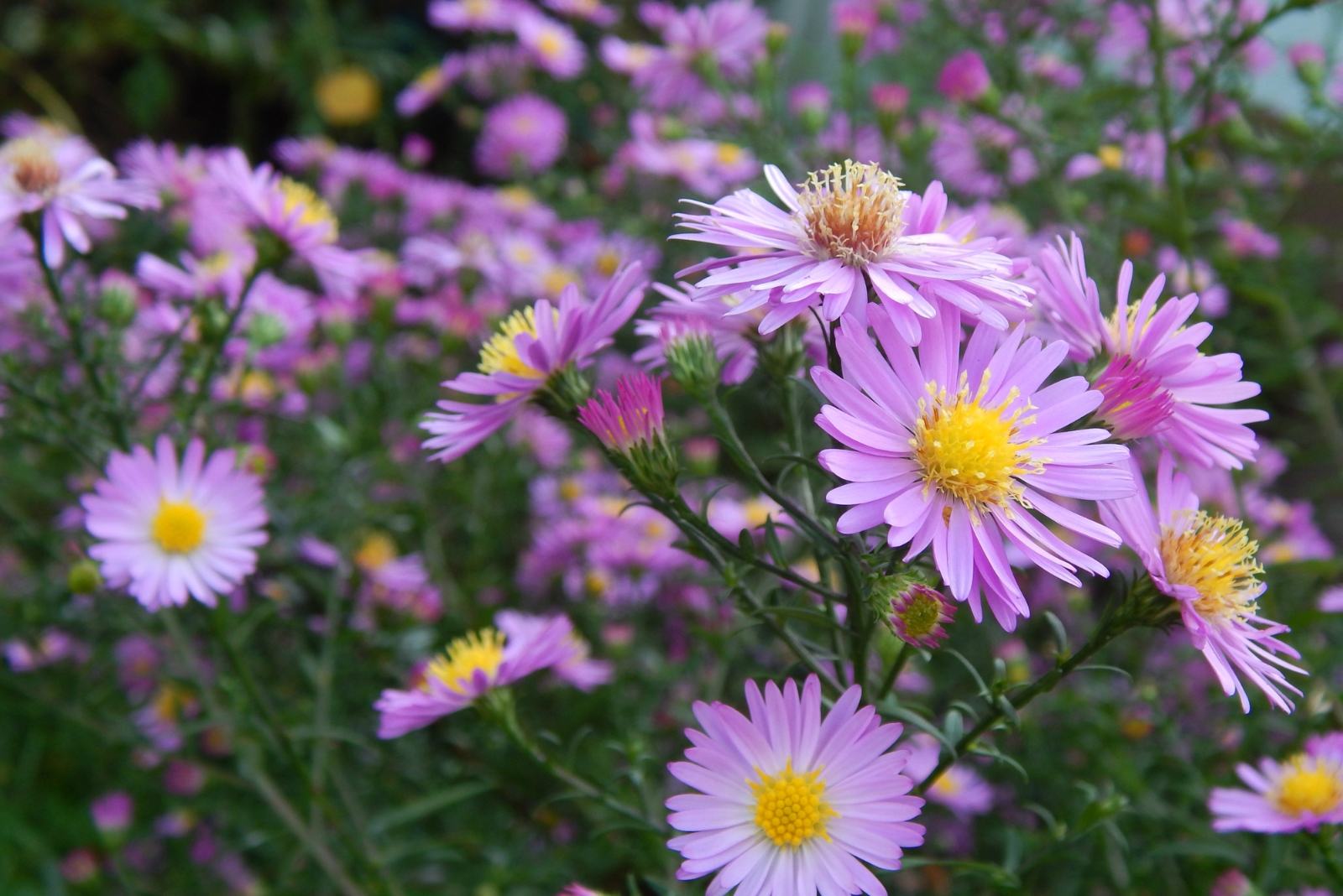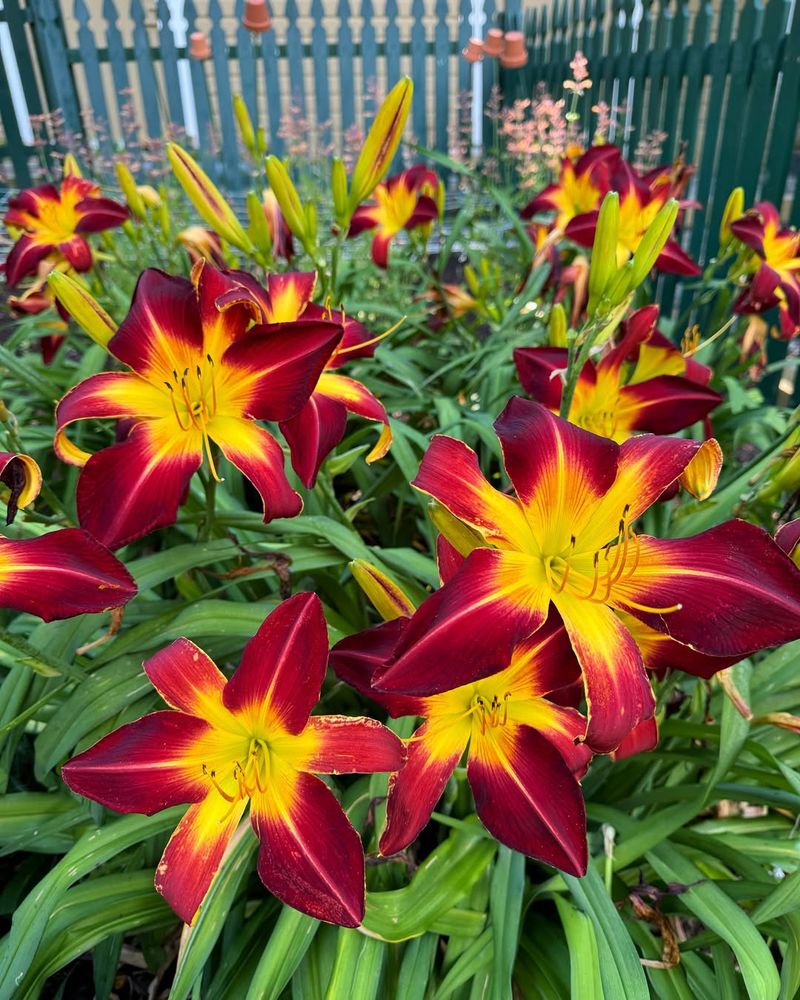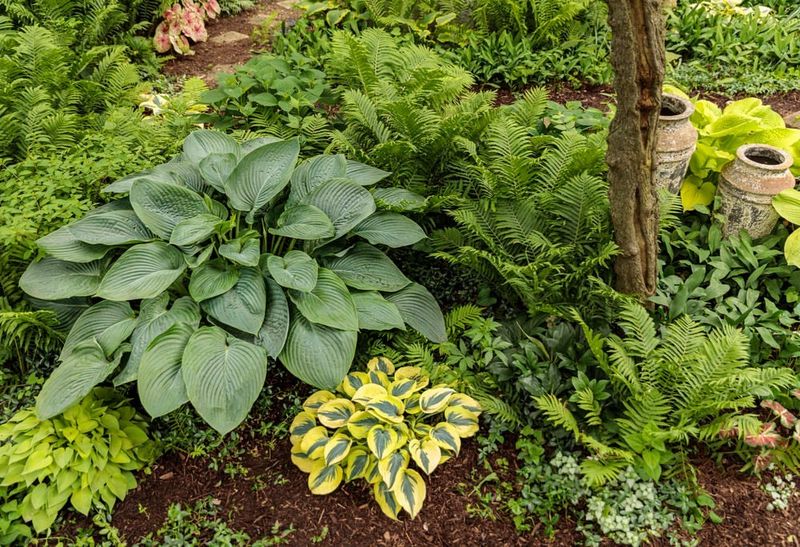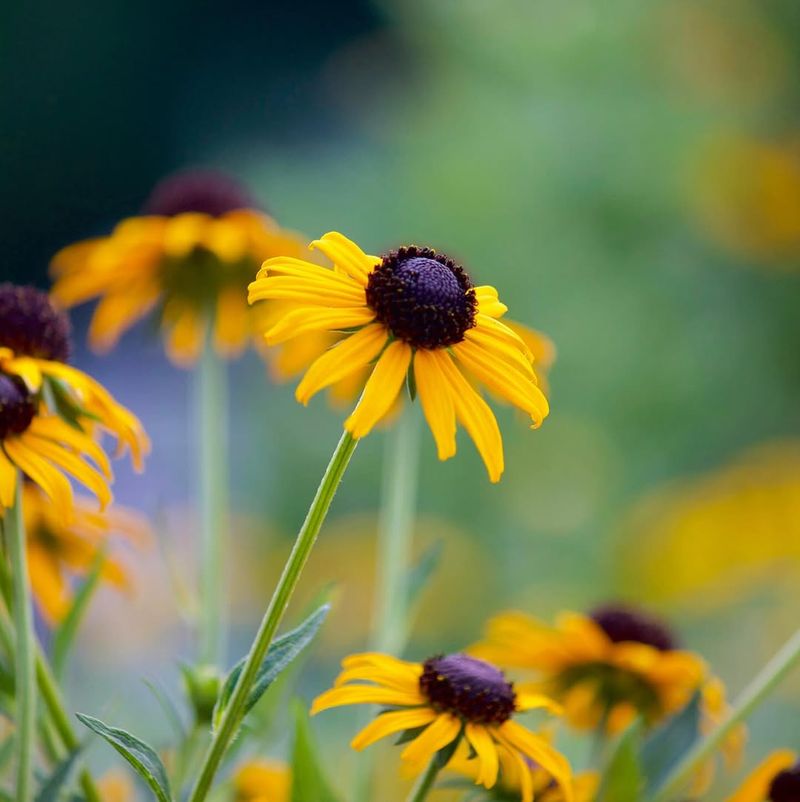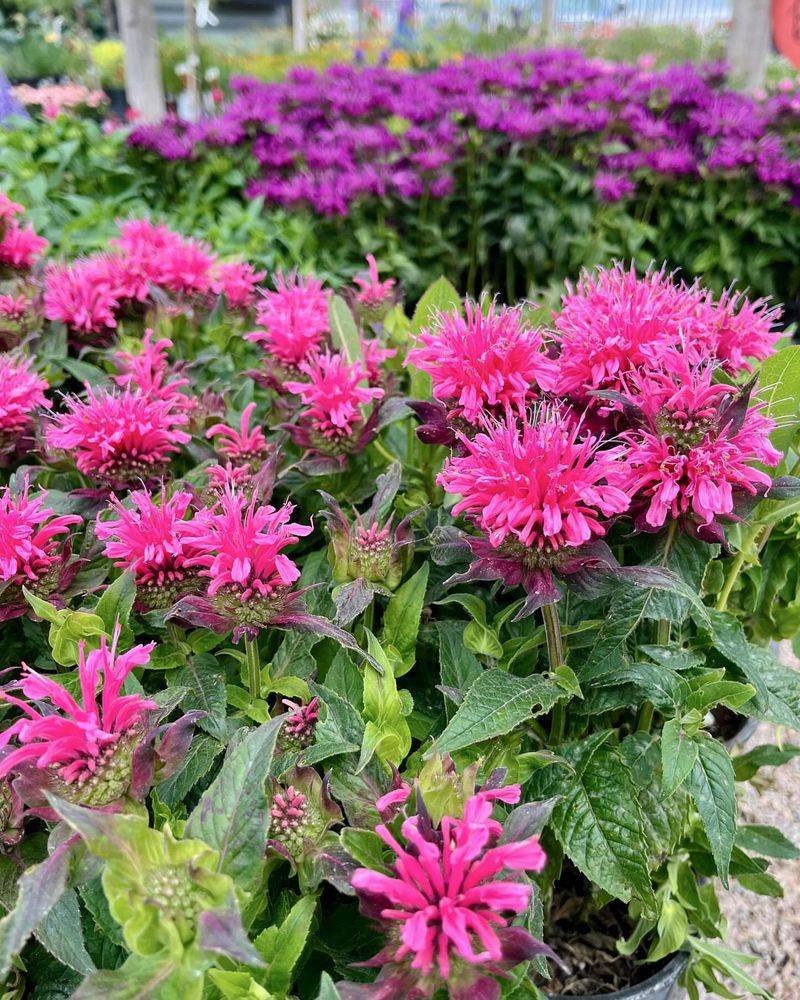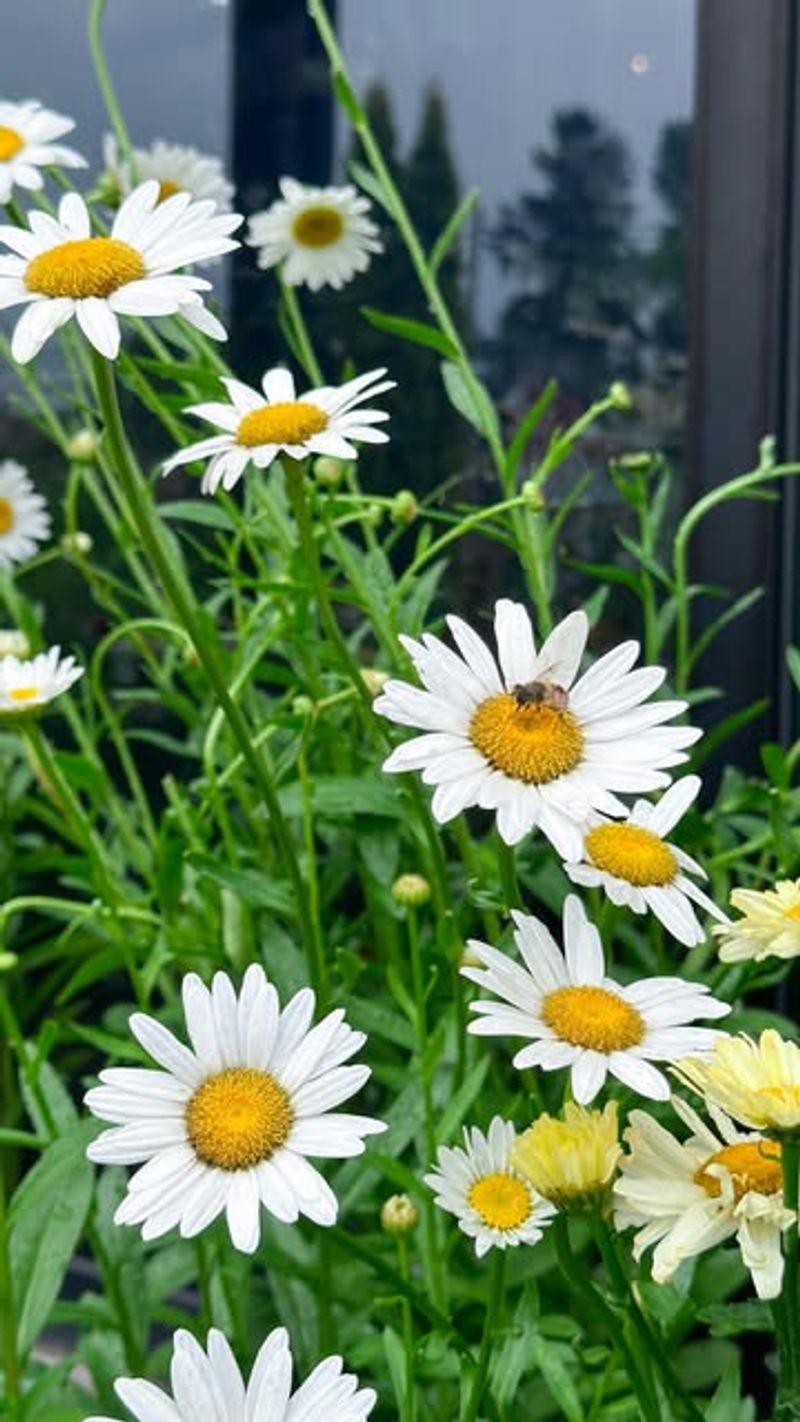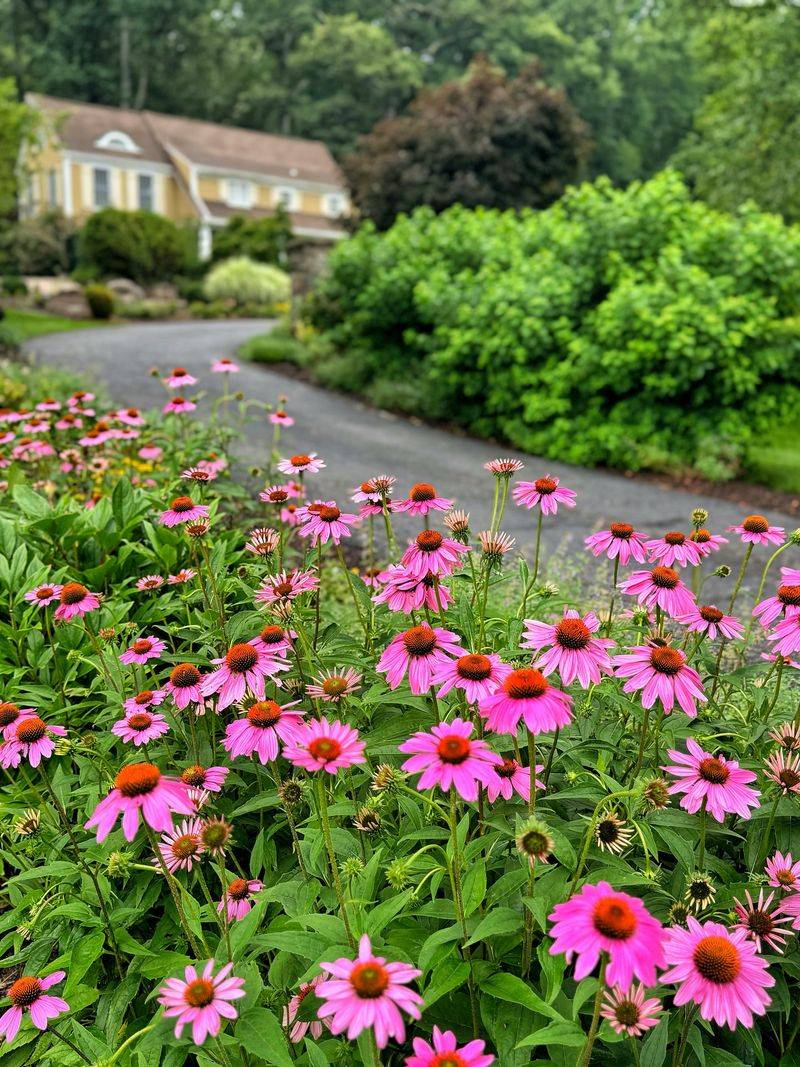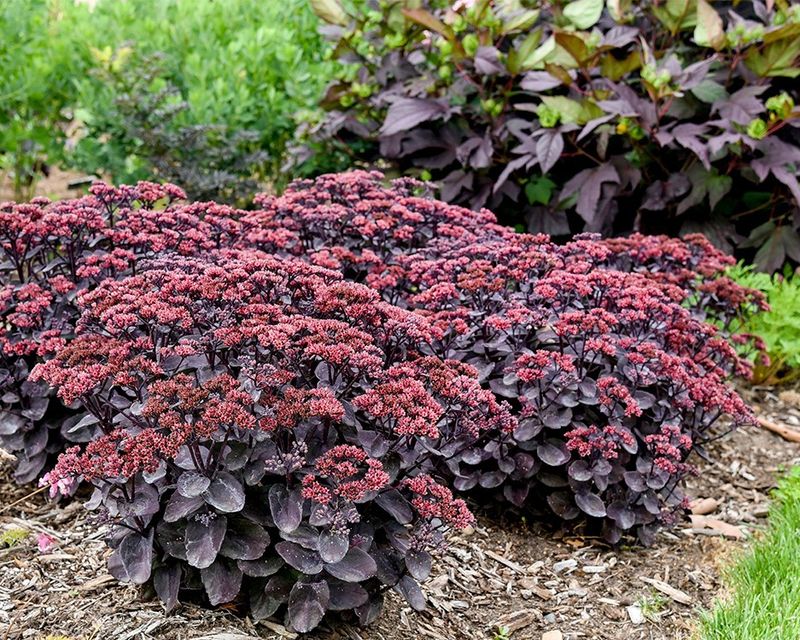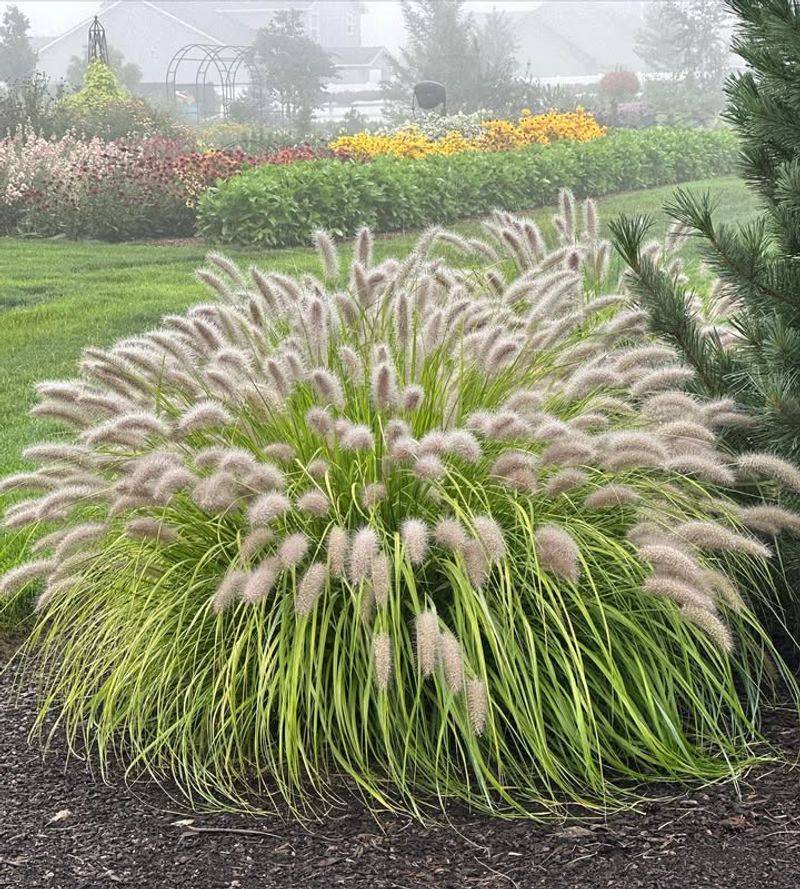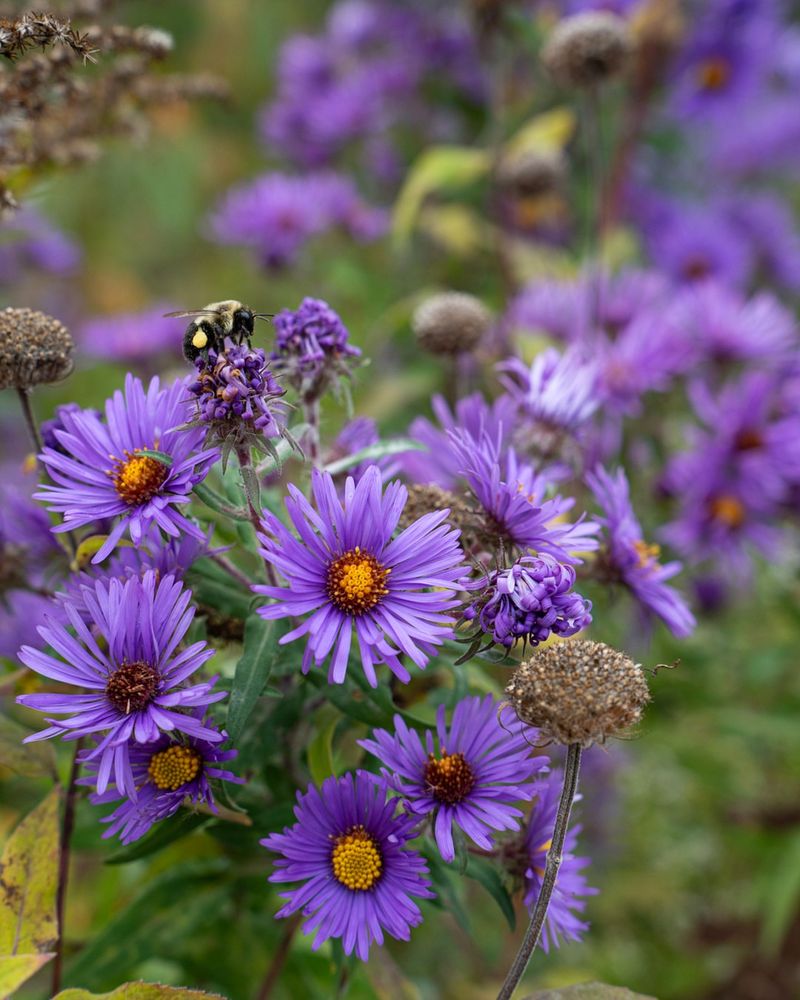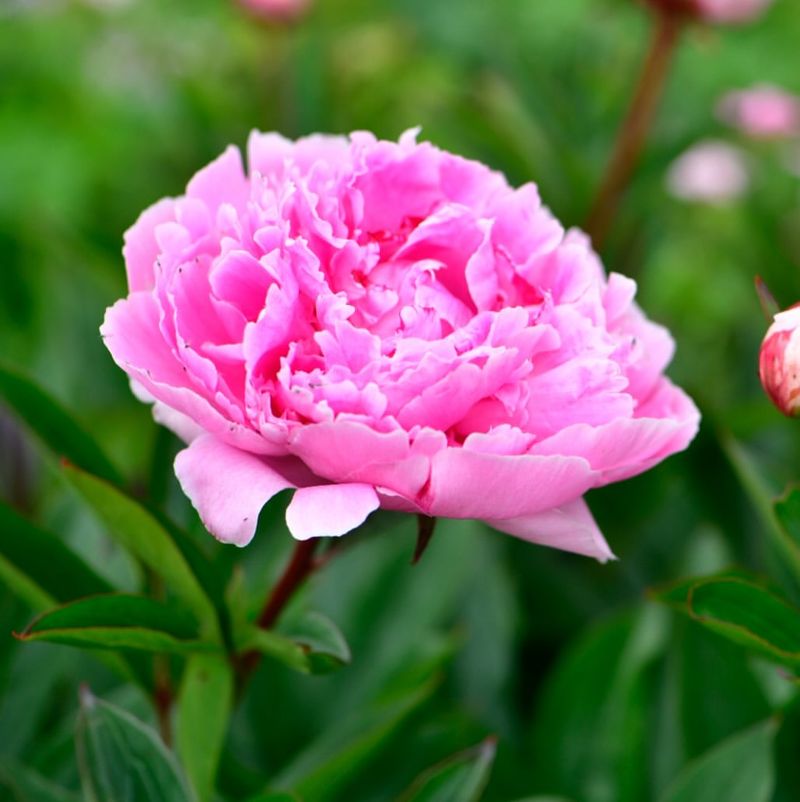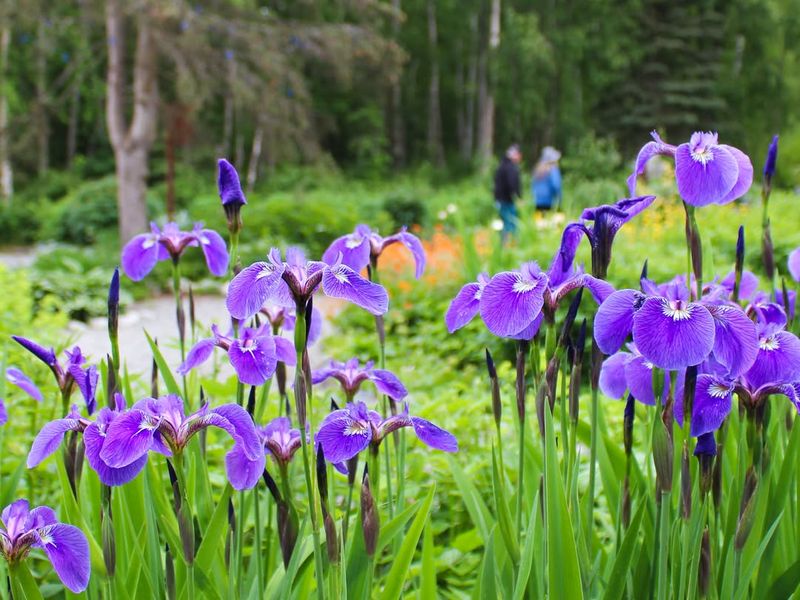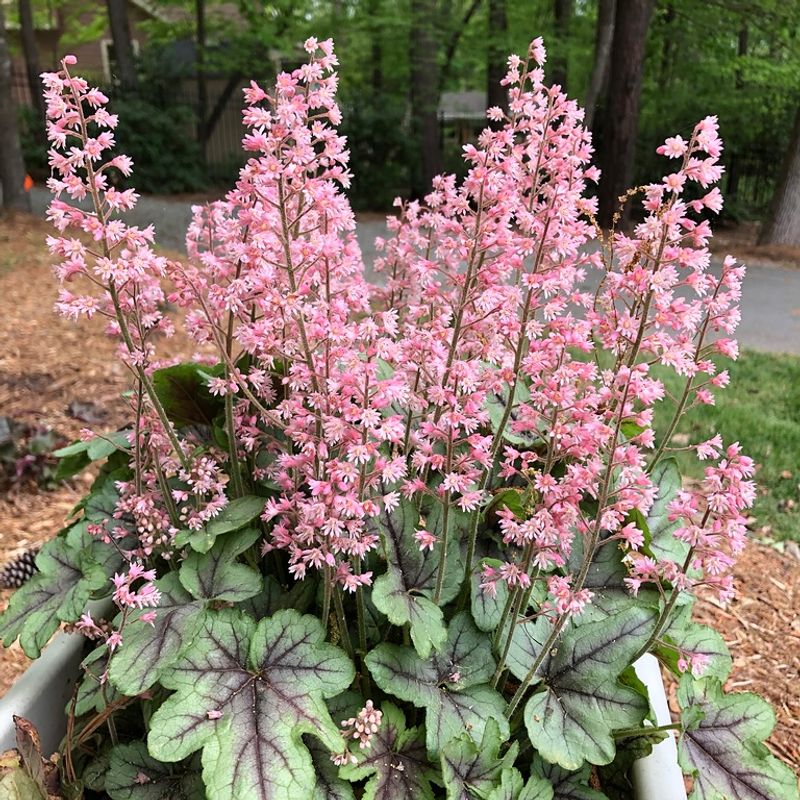Fall is the perfect time to give your perennials a fresh start by dividing them. When you split up crowded plants, they grow stronger and produce more beautiful blooms next season.
North Carolina’s mild fall weather makes this task easier on both you and your garden.
1. Daylilies
Daylilies are tough as nails and can handle North Carolina’s hot summers without complaining. After a few years, their clumps get so crowded that fewer flowers appear, which means it’s time to divide them.
Grab a shovel and dig up the whole clump, then pull apart the roots into smaller sections. Each division should have at least three or four fans of leaves. Plant them right away, water well, and you’ll see incredible blooms next summer that brighten every corner of your yard.
2. Hostas
With their gorgeous leaves in every shade of green, blue, and white, hostas turn North Carolina shady spots into showstoppers. Over time, the centers of hosta clumps can die out, leaving an ugly bare patch in the middle.
Fall division fixes this problem and gives you extra plants to spread around your garden. Use a sharp spade to cut through the roots, making sure each piece has several shoots. Your newly divided hostas will settle in before winter and explode with fresh growth come spring.
3. Black-Eyed Susans
Nothing says late summer quite like the cheerful golden petals and dark centers of black-eyed Susans. They spread quickly through your garden, which is great until they take over more space than you planned.
Dividing them every three years keeps them healthy and prevents overcrowding. Simply dig around the base, lift the clump, and separate it into smaller pieces with your hands or a knife. These native North Carolina beauties will reward your effort with loads of sunny flowers that butterflies absolutely adore.
4. Bee Balm
Hummingbirds go crazy for bee balm’s tubular flowers, making it a must-have for North Carolina wildlife gardens. Unfortunately, this fast-growing perennial can develop bare centers and become prone to powdery mildew when overcrowded.
Fall division improves air circulation and keeps plants vigorous. Dig up the entire plant and use your hands to pull apart the root sections, keeping only the healthy outer portions. Replant them with plenty of space between divisions, and you’ll enjoy healthier plants that attract more hummingbirds and bees to your garden all summer long.
5. Shasta Daisies
Classic white petals surrounding sunny yellow centers make shasta daisies a cottage garden favorite. After about three years, the centers of these plants become woody and produce fewer flowers, which signals it’s division time.
Wait until after they finish blooming in fall, then dig up the clumps and separate them into smaller sections. Each division needs strong roots and several shoots to thrive. Plant them in well-draining soil with full sun exposure, and these cheerful flowers will bounce back with incredible energy next growing season.
6. Coneflowers
Native to our region, coneflowers are drought-tolerant champs that handle North Carolina’s unpredictable weather like pros. Their spiky seed heads provide winter food for goldfinches, but overcrowded plants produce smaller flowers and weaker growth.
Dividing them every four years keeps them performing at their best. Carefully dig around the taproot, lift the plant, and cut through the crown to create several sections. Make sure each piece has roots and shoots attached, then replant immediately. Your divided coneflowers will thank you with stunning purple, pink, or white blooms.
7. Sedum
Sedum’s thick, fleshy leaves store water like tiny reservoirs, making them perfect for hot, dry spots in your North Carolina garden. As they mature, the centers can become floppy and less attractive, especially after years of heavy flower production.
Fall is ideal for dividing these succulents because cooler temperatures help them recover quickly. Simply pull apart the stems or cut through the roots with a clean knife, making sure each section has roots attached. Plant divisions in well-draining soil, and they’ll develop strong root systems before winter arrives, ready to dazzle you next fall.
8. Ornamental Grasses
Swaying in the breeze, ornamental grasses add movement and texture that other perennials just can’t match. Many varieties develop dead centers after several years, creating a donut shape that looks less than attractive in your landscape.
Fall division rejuvenates these plants and gives you extras to plant elsewhere. Use a sharp saw or axe to cut through the tough root ball, creating pie-shaped sections. Each piece should have healthy roots and shoots. Replant them at the same depth they were growing before, and you’ll have beautiful, full grasses that dance in the wind.
9. Asters
When most flowers are calling it quits for the season, asters burst into bloom with clouds of purple, pink, and white flowers. Monarch butterflies fueling up for migration absolutely depend on these late-season nectar sources.
Dividing asters every two to three years prevents them from becoming leggy and weak. Dig up the clumps in early fall, then separate them into smaller sections using your hands or a knife. Each division needs several stems and a good root system. Plant them in sunny spots with good drainage, and they’ll reward you with spectacular autumn color year after year.
10. Peonies
Few flowers can match the romance and fragrance of peonies with their enormous, ruffled blooms. While they can live for decades without division, splitting them rejuvenates old plants that have stopped flowering well.
Fall is the only time to divide peonies successfully in North Carolina. Carefully dig up the root clump and wash off the soil so you can see the pink growth buds clearly. Cut the roots into sections with three to five eyes each. Plant them shallow, with eyes just two inches below the soil surface, or they won’t bloom. Patience pays off with these beauties.
11. Irises
Irises produce spectacular flowers in almost every color imaginable, from deep purple to sunny yellow to pristine white. Their thick rhizomes spread across the soil surface, and after three or four years, they become so crowded that blooming decreases dramatically.
Fall division is essential for keeping irises blooming abundantly. Dig up the rhizomes and break them apart at the natural divisions, keeping only the healthy outer sections. Trim the leaves back to six inches and replant the rhizomes shallow, with the tops exposed to sunlight. Proper division ensures spectacular spring shows for years ahead.
12. Coral Bells
Grown more for their stunning foliage than flowers, coral bells come in amazing colors like burgundy, lime green, and peachy orange. As they age, the woody crown rises above the soil line, making plants look leggy and stressed.
Dividing them every three to four years keeps them compact and healthy. Carefully dig up the plant and cut the crown into sections, making sure each has roots and leaves attached. Replant divisions slightly deeper than before to cover the woody crown. Your refreshed coral bells will produce vibrant new growth that lights up North Carolina shady garden spots all season long.

